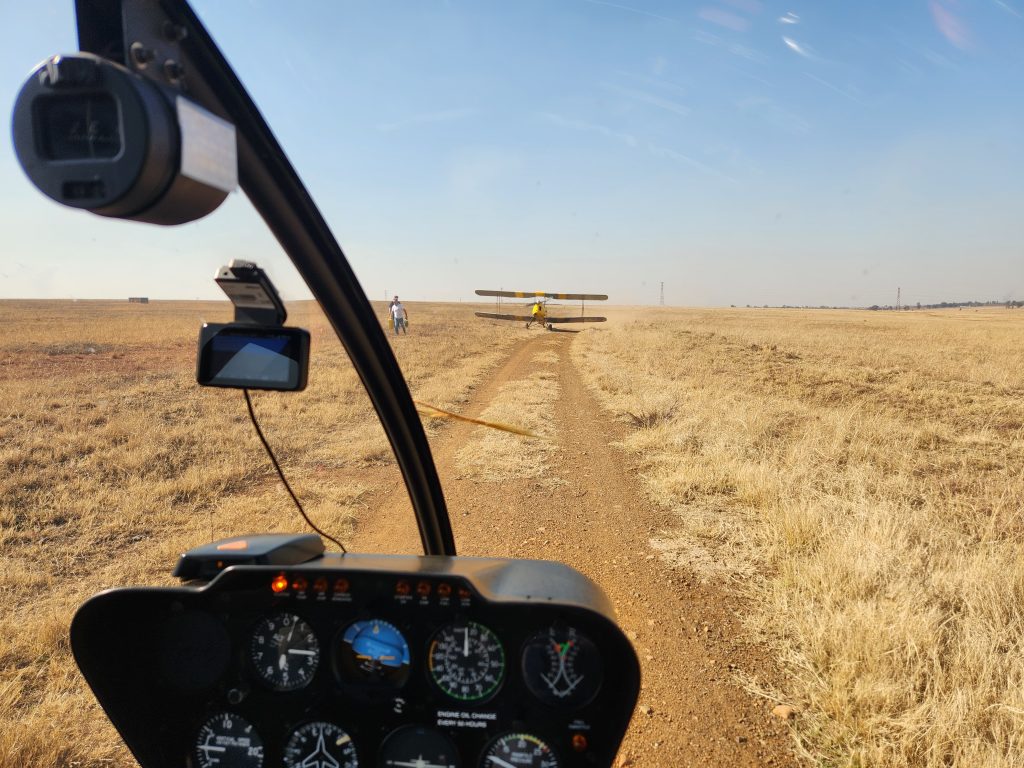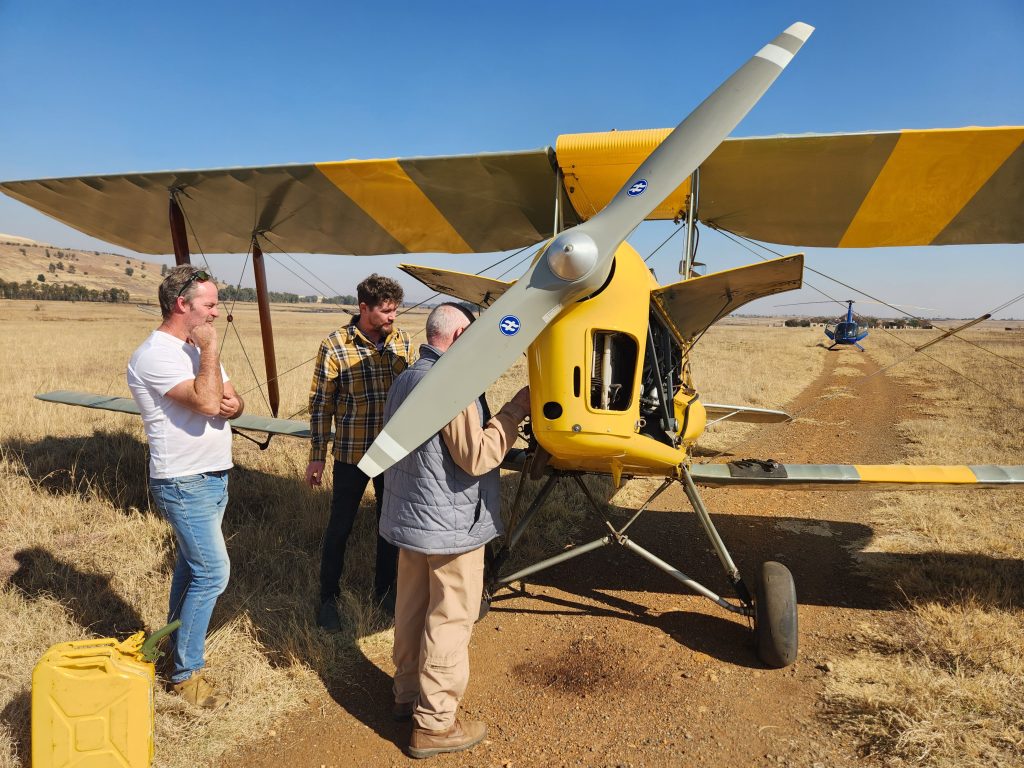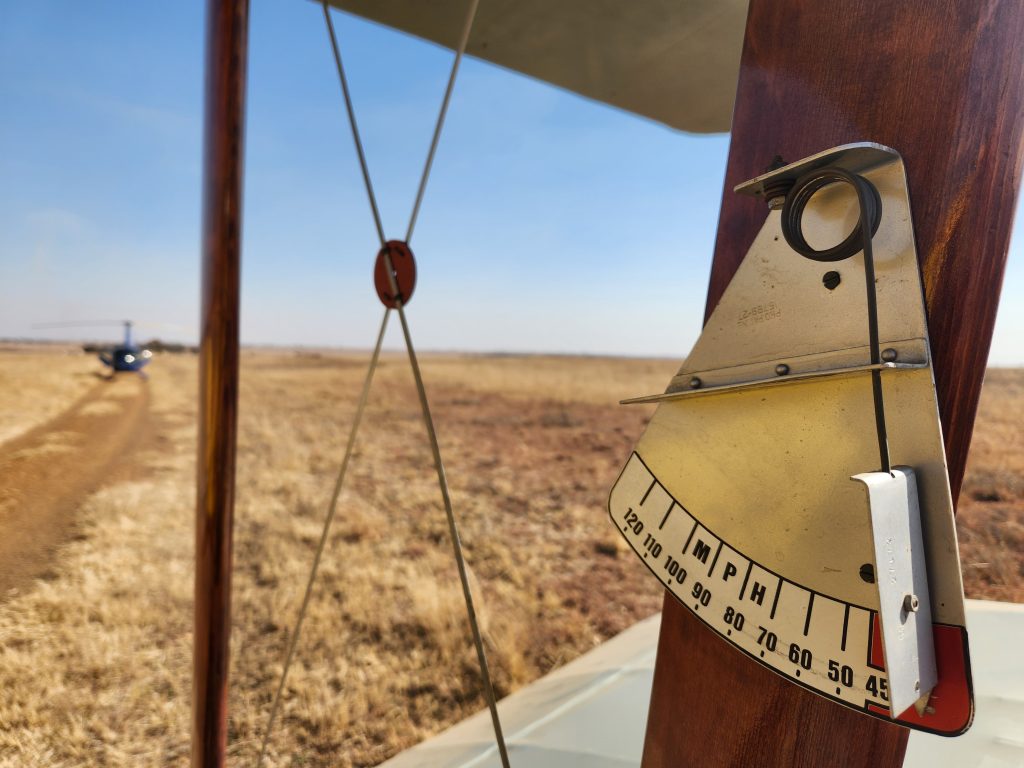Helicopters
George Tonking
It’s been a while since I put pen to paper (or finger to screen) about flying. And considering my rollercoaster career as a helicopter pilot—equal parts Top Gun and Mr. Bean—I thought it a crime not to share some recent escapades from the wild blue yonder.



You know how a classic joke starts with a priest, a rabbi and a nun walking into a bar? Well, I figure a proper aviation story should kick off just as absurdly. Something like: “A Robbie, a Mooney, and a Tiger Moth fly onto a farm…”
It’s not quite that, but stay with me…
The day began ordinarily enough. I was out on patrol in my beloved, slightly wheezy Robinson R44—my trusty-rusty chopper that rattles more than a maraca in a mariachi band. Since it was school holidays and solo flying can get about as lonely as a Cessna parked at a fuel strike, I invited my son Ethan to ride along in the back seat for a day out with Dad.
Riding shotgun was Carin, a young commercial pilot from Sweden. We called her the “Stockholm Bombshell” not just because she looked like she’d stepped off the set of a Scandinavian action movie, but because her wit had more bite than an angry Ratel. A fierce blonde with a big laugh and a bigger passion for rotorcraft, she’d joined us to log some operational time and liven up the heliport with her Nordic charm.
Aviation in South Africa: Where Dreams Need Extra Fuel
To paint the backdrop: general aviation in South Africa isn’t what it used to be. Once a bustling community of Cessnas, Beechcraft, and Bells buzzing over the bushveld, it’s now more of a sepia-toned postcard of the glory days—faded by rising fuel costs, regulatory red tape and an economy that’s been driven like a rental car with no deposit.
These days, the 125.8 MHz frequency is so quiet it might as well be the call line to a landline number in Lesotho. So when two pilots recognise each other’s voices mid-air, it’s like running into your best mate at the pub on a Friday. In this muddy watering hole of fading dreams and heroic hangar stories, we all know each other.
Enter the Mooney and the Moth
Somewhere near Bapsfontein, just after exiting OR Tambo’s airspace, I switched frequencies and heard a familiar voice crackling over the comms.
“Is that you, Phil?”
“Ja, Georgie, I’m up from White River to fetch my Tiger…”
Now that got my attention. Phil, a serial aircraft smous extraordinaire, had finally realized his lifelong dream: owning a de Havilland Tiger Moth. For those unfamiliar, the Tiger Moth is a 1930s-era biplane that looks like it should come with goggles and a scarf. An aviation classic. A flying fossil. A Spitfire’s adorable granddad.
But moving antique aircraft around is no small feat—it takes logistics, luck, and ideally, a healthy respect for spontaneous combustion. Phil had somehow managed to secure both a pilot and a plan. Enter: Buzz.
Buzz and the Yellow Wonder
Buzz, short for Buzuidenhout, is the sort of guy who’s flown everything from crop dusters to things that shouldn’t have flown at all. With a fifty-year career and more stories than the control tower at Lanseria, he’s a legend in the South African rotor-wing world. He even trained most of us, usually with a raised eyebrow and thinly veiled disappointment.
Back to the skies. About two hours later, flapping along near Vereeniging, I heard Phil again.
“Georgie, you seen a little yellow biplane come past?”
“Buzz?”
“Ja, lost him. He left Vereeniging an hour ago with a bust radio.”
Turns out Buzz and the Tiger Moth had parted ways with the Mooney’s brisk 150 mph cruise speed leaving the 80 mph biplane behind like Ouma’s bicycle in a hurricane.
Spotting Buzz
It was a hazy day—not ideal for playing, Where’s Buzzy? with a canary-coloured antique. But sure enough, a speck on the horizon eventually grew into a wobbly yellow silhouette hugging the tree line.
I planned a join and slid my R44 in formation next to him. Buzz turned his head, saw me, and gave the kind of stare you’d expect if he’d just seen a giraffe piloting a Boeing. I gave him the thumbs up. He didn’t look thrilled.
Five minutes later, the Tiger began to descend. Gently, gingerly, the biplane landed on a secluded farm road south of Brakpan. No radio, no warning. Just plop—like a duck in a pothole.
I set the Robbie down beside him, ran over and yelled, “Buzz! What now?”
He pulled off his headset and shouted over the ticking engine, “It just died!”
Classic.
The Fix
Soon enough, we had ourselves a scene: a stricken Tiger, a stranded pilot, a Robbie parked in a field, and a Swedish bombshell trying to swat flies with a map. I radioed around and, miraculously, we located a Tiger Moth mechanic back at Brakpan-Benoni airfield.
Within the hour, I ferried out the mechanic, his tools, and some extra Mogas in my R44. Diagnosis: a rusty steel tank had blocked the gravity-fed fuel line. Basically, the 80-year-old warbird had a blocked artery. Typical.
After a bit of coaxing, cursing, and carb cleaning, the Tiger fired up and flew home for the TLC it so desperately needed.
The Punchline
Like I said, a good joke starts with a priest, a rabbi, and a nun walking into a bar.
In our case? A helicopter pilot, a Tiger Moth mechanic, and a Swedish bombshell did exactly that—after the job was done.
And yes, the beer was cold, the laughs were loud, and the story got at least 20% more dramatic with each retelling.
